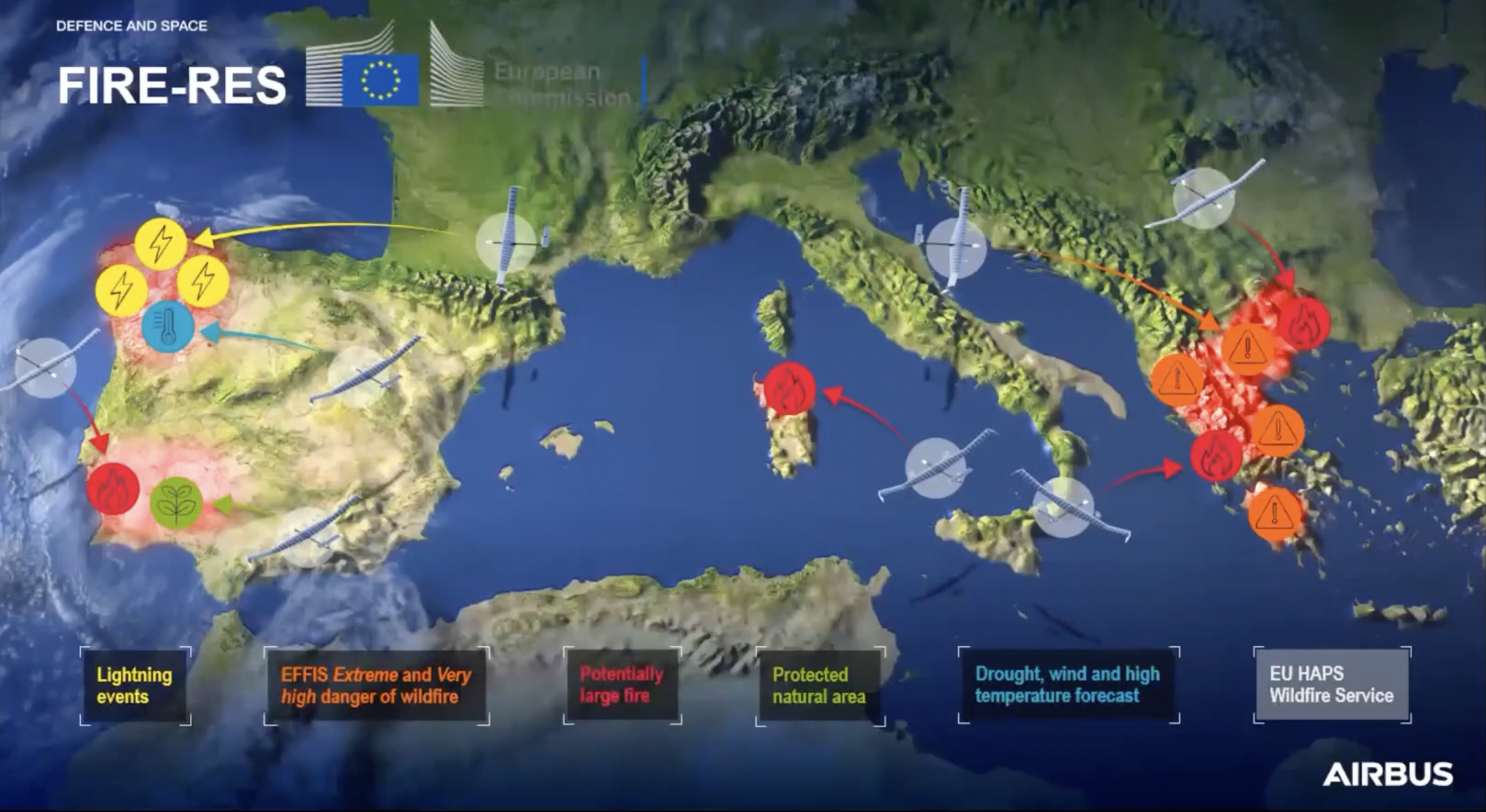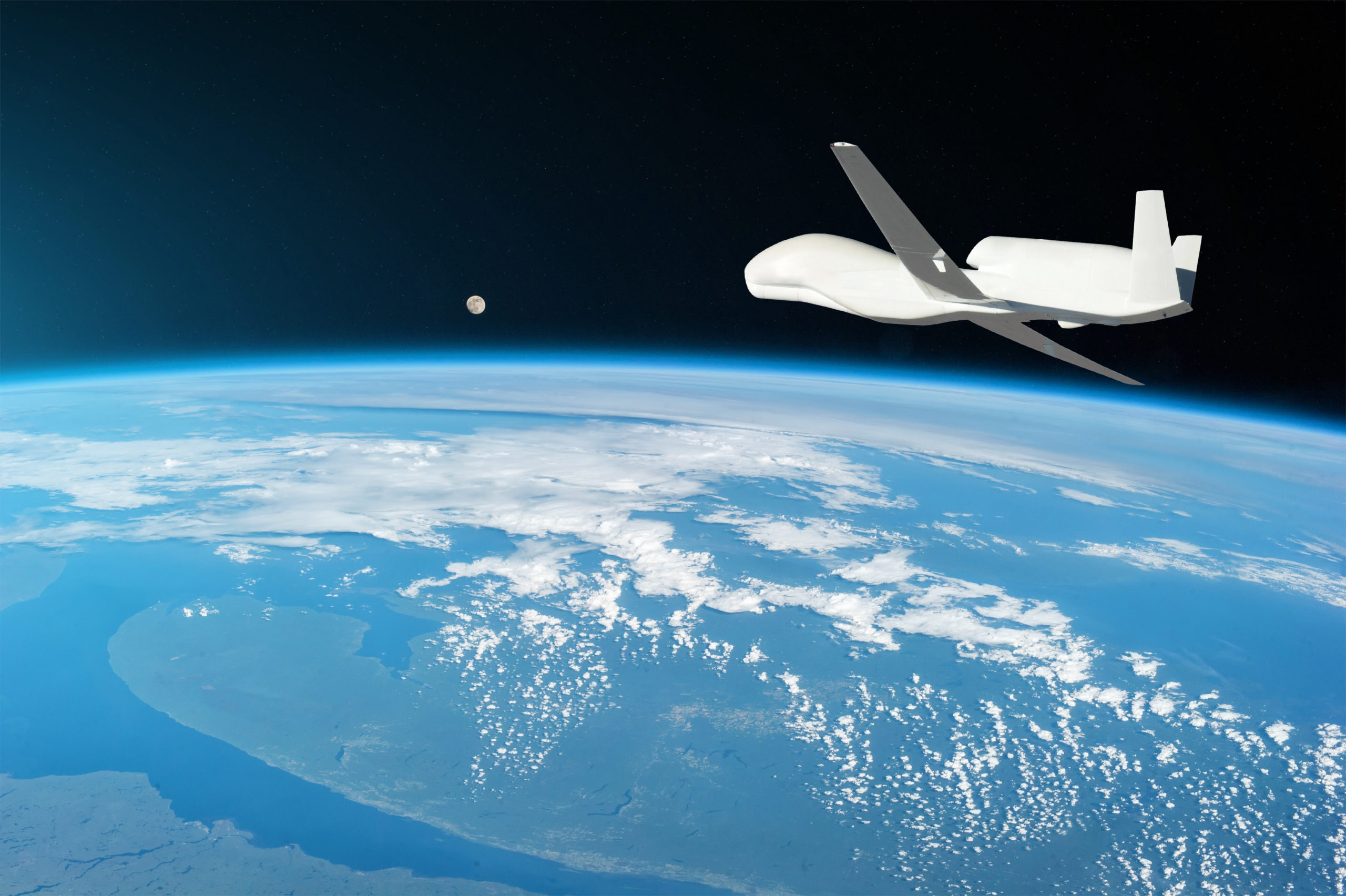Fighting fires is no joke: temperatures above 800 °C (or 1,472 °F), huge areas affected, quick spread and low visibility. There’s also the social and economic impact: according to the USA’s National Interagency Fire Center, over a million acres of US territory have been affected by wildfires in the last ten years, while the suppression cost has averaged $1.8 billion during the same span.
Today’s technology helps fight those forest fires but, according to specialists, it is still limited.
“Typically, some satellites only provide four or five snapshots [of a wildfire] daily, and a lot can change throughout the day,” Marcus Johnson, Automation Subproject Manager at NASA, explained during a panel promoted by the HAPS Alliance. “So getting a solution that is more persistent is really needed.”
That’s where advancements in the High Altitude Platform Stations (HAPS) field can change the picture.
HAPS are flying radio stations located between 20 km to 50 km (12.4 miles to 31 miles) above the ground at a specified, nominal, fixed point relative to the Earth, according to the International Telecommunication Union (ITU). It is expected that HAPS systems “can potentially be used to provide both fixed broadband connectivity for end-users and transmission links between the mobile and core networks for backhauling traffic,” according to the body.
Yet researchers are still scratching the surface of what HAPS systems can deliver, especially when coupled with 5G and beyond. Often, more questions arise at each stage.
“What we are really trying to enable [with HAPS] is a basic situation awareness. What’s going on in the airspace is trying to connect the dots [between stakeholders]. But as we start creating more digital information exchanges, the need for communication becomes more prevalent,” Johnson said.
The Help Comes From Up Above
NASA and other stakeholders – like Airbus and Raven Industries – are figuring out how HAPS can successfully suppress wildfires more effectively while reducing costs.
“Persistence” seems to be a recurring term to describe challenges in this field. As discussed at a May 2021 NASA workshop, researchers identified the lack of persistence in fire detection/ tracking and communications as the two major gaps in today’s firefighting technology.
In 2019 NASA launched a programme to develop an at-altitude concept “intended to support future operations and scale for application[s]” like high altitude, long-endurance (HALE) vehicles, unmanned free balloons, airships, and supersonic or hypersonic aircraft.
In Europe, agencies and private companies are also investing efforts to develop the HAPS environment and more efficiently fight fires. According to the European Forest Fire Information System (EFFIS), the continent registered over 17,300 forest fires between 2009 and 2019, so the problem is a very material one to solve.
The European Union consortium FIRE-RES, for instance, will investigate how to generate new knowledge on sustainable integrated fire management models that help define positive future scenarios and demonstrate innovations to achieve them.
Airbus, one of the 35 members of the research initiative, will be in charge of proposing a definition for HAPS service, simulating how these services can perform and developing a roadmap for implementation.
According to Pere Roca, Technical Director at Airbus, the simulation will consist of a constellation of HAPS above the Mediterranean Arch, the region affected the most by forest fires. The company will also include protected natural areas and other sites where the risk of wildfires is considered high.

“The project consists in simulating how this fleet is able to cover all these events [fires] popping up,” Roca explained during the HAPS Alliance event.
FIRE-RES was granted € 21.5 million in investments and will kick off in December 2021, lasting until November 30, 2025.
Technology Taking Off
With so many projects starting in different regions, the HAPS community seems to be hopeful that the coming years have a lot in store for the development of this technology, in a movement that can help governments and administrations not only to fight wildfires but also connect underserved communities.
“One thing I continue to be excited about is the speed at which not only organisations but the infrastructure around HAPS and HAPS technology is advancing,” said Greg Ewert, VP and Treasurer at HAPS Alliance.
“The 3 billion unconnected and underserved folks in the world are not only a problem but also an opportunity for someone to crack that nut. I think 2022 is going to be a year for investigating how we can get the business models, the regulations in place so that we can start proving out the technology.”







